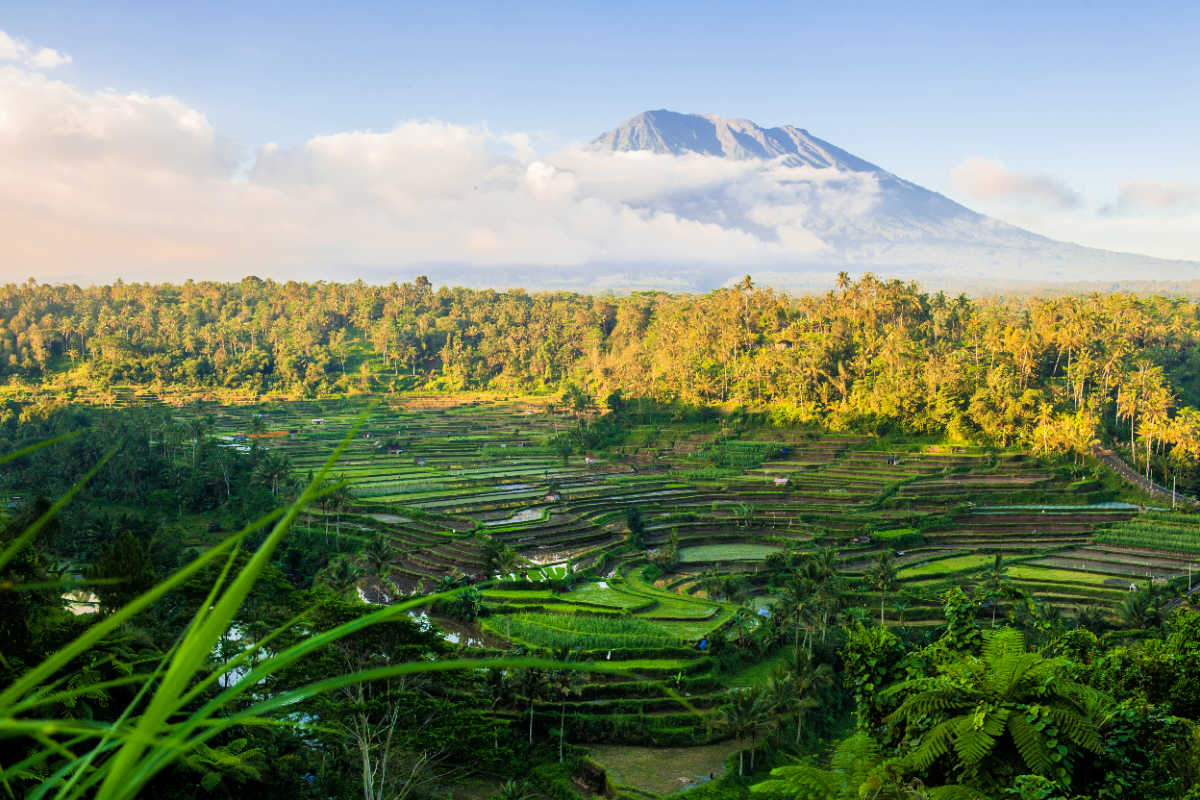In the modern day, there are very few opportunities for busy people to take time out for rest and relaxation, let alone indulge in a pilgrimage or extended period of contemplation and reflection.
Bali is a destination that offers a world of wellness opportunities and is now a true pilgrimage, too.

One of the best definitions of a pilgrimage is as follows: “A pilgrimage is a journey, often into an unknown place, where a person goes in search of new or expanded meaning about themselves, others, nature, or a higher good through the experience.”
When thinking about a pilgrimage, many may think of a pilgrimage to Mecca, the Camino de Santiago in Spain, or the Chota Char Dham Yatra in India.
Yet there is one very special group of people who have reconnected ancient pathways and footpaths across the island of Bali to create a pilgrimage, a regenerative travel experience that is changing the way in which tourists interact with their vacation destination in all the right ways.
Astungkara Way is a regenerative hiking trail that traverses 135km of the Island of the Gods on a 10-day adventure from coast to coast. Astungkara means ‘with hope’ or ‘God-willing’ in Balinese and is used in such a way as to express a deeply held belief amongst the Balinese people that there is always a higher power working in favor of the collective.
The trail is an invitation to all who participate to slow down, take notice, and truly connect with both nature and the truest essence of Bali.
While the 10-day experience is easily the most nourishing and impactful experience on offer by Astungkara Way for those who have less time available, hikers can experience the trail in sections, with the Tree to Sea journey running over six days, the Tree to Mountain section running over 3-days and 32km of stunning Balinese landscapes.
Guests take part in Balinese rituals, learn about traditional ways of life, and stay in local homestays with the most generous and welcoming hosts. The trail includes money-can’t-buy cultural experiences and stop-offs at spots of cultural significance, not in any guides, books, or maps.
What sets the Astungkara Way experiences apart from many tourism models in Bali is that there is regeneration at the heart of everything they do. According to Astungkara Way, the impact of the pilgrimage is four-fold; but in reality it is far more than this. The impact the experience has on participants is life changing.
The first is attitudinal: redefining the relationship between visitors and locals. The second is cultural; participating in the adventure helps preserve local culture by reminding its custodians – and youth – of its importance and value.
The third is the economic impact since hikers support the local heroes that Astungkara Way connects with along the way who are taking regenerative action in their communities.
The final impact of note is environmental; by eating locally sourced food all along the trail, hikers support local agriculture and ancestral crop cultivation.
Ancestral crop cultivation is a fascinating element of the Astungkara Way offering. Not only does Astungkara Way offer regenerative hiking trails, but it also plays a huge role in reviving regenerative rice cultivation in Bali. Rice is life in Bali and it’s regeneration impacts everyone!
The impact of this is so significant. At a time when local families and landowners are feeling increasingly economically pinched and as land prices soar due to tourism-related inflation, it is all too tempting for local people to sell off their ancestral rice paddies for financial gains.
These rice paddies are often turned into construction sites overnight, transformed into everything from resorts to restaurants, apartment complexes, and hotels.
Astungkara Way has been collaborating with Subak Uma Lambing farmers in the heartlands of Bali to shift towards chemical-free and ecosystem-regenerating rice farming.
This rice is then sold at the market, and the profits generated are used to help hire and train more young and aspiring Balinese agriculture graduates to work alongside hard-grafting farmers across the island to facilitate the transition to regenerative farming.
This creates not only higher-value crops but also helps protect the landscape for many more generations to come, for both Balinese communities and tourists who travel from all over the world to see for themselves the beauty of the Island of the Gods.
Tourists seeking to connect with nature, learn more about where their food comes from and how they can help support the environment in Bali and back at home, can visit the Astungkara Way farm for either a half day tour or overnight farm experience.
Overnight guests can sleep surrounded by the rice paddies, with incredible star-gazing and sunrise views.
Guests are invited to harvest their own dinner from the farm’s permaculture gardens and learn from local chef Ibu Tatik all about how to make the most of the freshest ingredients known to man.
Guests are welcome to share stories around the campfire and join a night walk through the subak before indulging in a deep sleep in the open-sided bamboo house that overlooks the traditional rice paddies.
The Bali Sun Premium members receive 15% off all Astungkara Way hiking trail experiences. For more information about Astungkara Way, visit their website or follow them on Instagram.
Remove All Ads & Unlock All Articles… Sign up for The Bali Sun Premium

Plan Your Bali Holiday:
Book The Best English Speaking Drivers For Airport Transfers & Tours
Choose From Thousands of Bali Hotels, Resorts, and Hostels with Free Cancellation On Most Properties
Book Cheap Flights To Bali
Don’t Forget Travel Insurance That Covers Medical Expenses In Bali
For the latest Bali News & Debate Join our Facebook Community
SUBSCRIBE TO NEW POSTS
Enter your email address to subscribe to The Bali Sun’s latest breaking news, straight to your inbox.
